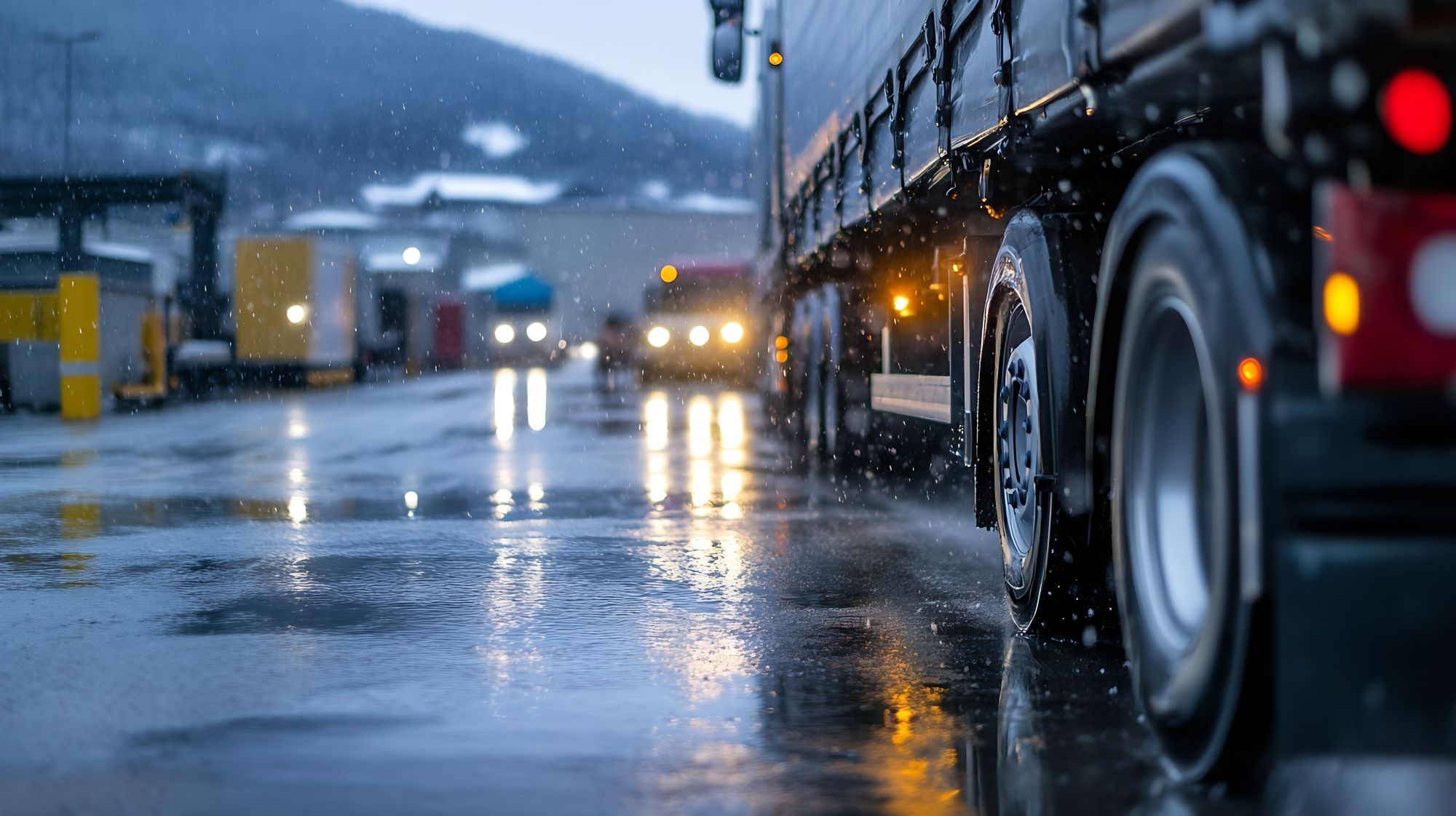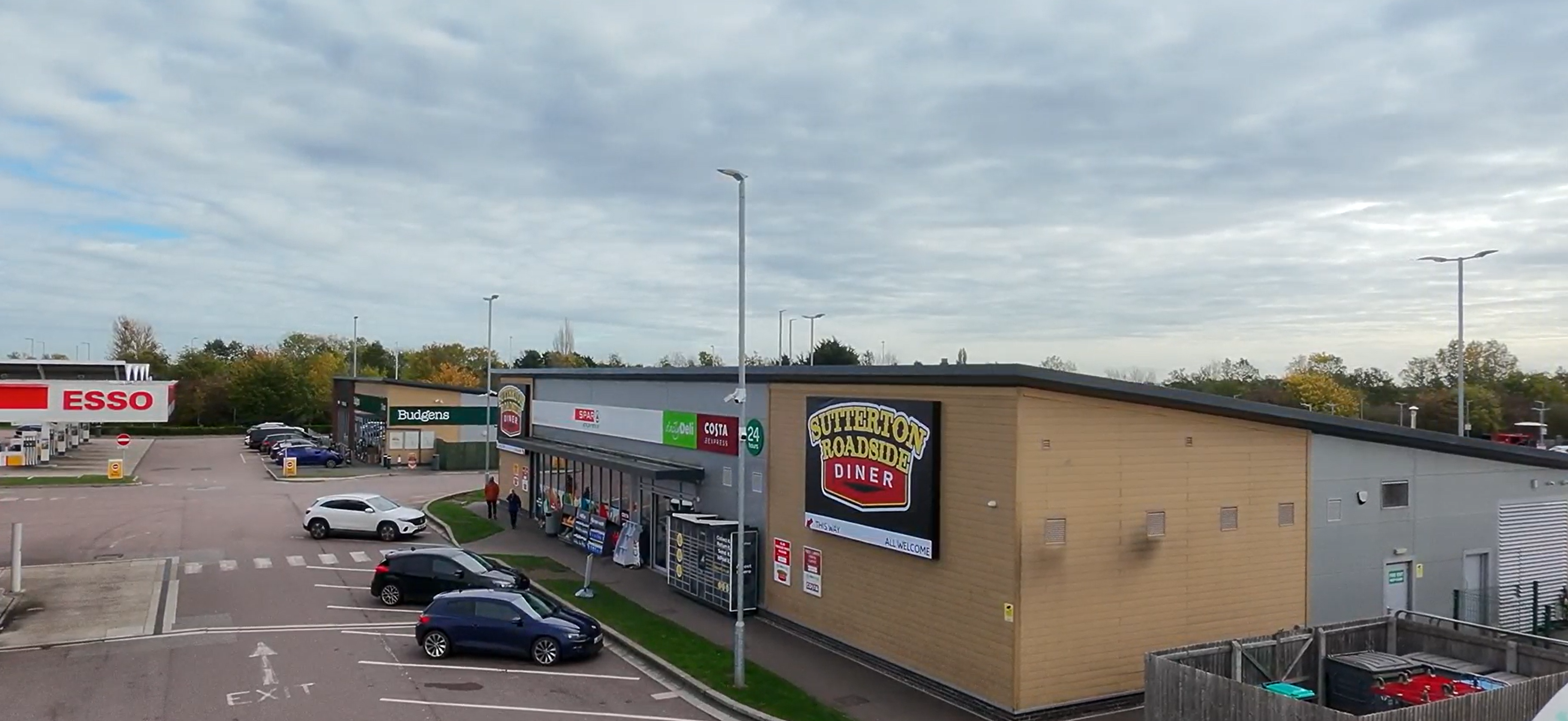
Guest
Jak zmiany klimatu wpływają na sektor mobilności
Utworzony: 21.07.2025
•
Aktualizacja: 21.07.2025
Zmiany klimatu nie są już odległym zagrożeniem. Dla osób pracujących w transporcie drogowym to codzienna rzeczywistość operacyjna, którą z każdym rokiem coraz trudniej ignorować. Od fal upałów, które topią asfalt, po powodzie, które odcinają główne trasy, wpływ zmieniającego się klimatu jest wpisany w działalność związaną z transportem towarów.
Dla menedżerów flot oznacza to konieczność dostosowania się do zmieniających się przepisów, aktualizacji infrastruktury i ponownego przemyślenia planowania ciągłości. Dla kierowców oznacza to dostosowanie się do nowych zagrożeń na drodze - od przebicia opony po zakłócone terminy dostaw. A dla całego sektora sygnalizuje to potrzebę bardziej odpornego, świadomego klimatu podejścia do mobilności.
Zakłócenia pogodowe są zagrożeniem operacyjnym
W lipcu 2022 r. Wielka Brytania doświadczyła najgorętszego dnia w historii. Gdy temperatura wzrosła do 40 ℃, drogi zaczęły mięknąć, a odcinki A14 zostały zamknięte z powodu degradacji nawierzchni. Operatorzy flot byli zmuszeni do zmiany trasy dostaw, czasami w krótkim czasie, podczas gdy temperatury silników rosły, a pojazdy miały trudności z utrzymaniem wydajności.
W tym samym roku silne wiatry wywołane przez Storm Eunice spowodowały rozległe szkody w korytarzach transportowych w Europie Zachodniej, przewracając pojazdy o wysokich burtach i uszkadzając ładunki wrażliwe na temperaturę. Tymczasem w styczniu 2024 r. sztorm Henk zalał rozległe obszary środkowej Anglii. Kluczowe trasy w Midlands były nieprzejezdne, a niektórzy kierowcy utknęli na wiele godzin.
Nie są to odosobnione przypadki. Są to oznaki systemu transportowego coraz bardziej podatnego na zagrożenia klimatyczne. Nawierzchnie dróg, komponenty pojazdów i sieci logistyczne są testowane przez zmieniające się warunki - a konsekwencje są odczuwalne w całym łańcuchu dostaw.
Zakłócone łańcuchy dostaw
Jeśli chodzi o zakłócenia związane z klimatem, ich skutki są odczuwalne nie tylko na poszczególnych trasach. Dotknięte są całe łańcuchy dostaw - czasami bez większego ostrzeżenia. W Holandii podnoszący się poziom mórz i intensywniejsze opady deszczu skłaniają władze i firmy do ponownej oceny odporności krytycznej infrastruktury logistycznej, szczególnie w nisko położonych obszarach przemysłowych.
Port w Rotterdamie - największy port morski w Europie - podjął aktywne kroki w celu dostosowania się do ryzyka klimatycznego, wzmacniając ściany nabrzeża, podnosząc drogi dojazdowe i modernizując systemy kanalizacji deszczowej w celu ochrony przed powodziami. Śródlądowe centra logistyczne również znajdują się pod obserwacją, ponieważ ekstremalne warunki pogodowe ujawniły słabe punkty dróg dojazdowych i drenażu.
Innowacje w transporcie
Technologia flotowa szybko się rozwija, zwłaszcza jeśli chodzi o elektryfikację i inteligentną diagnostykę. Jednak zmiany klimatyczne stwarzają nowe wyzwania nawet dla najbardziej zaawansowanych pojazdów. Wydajność akumulatorów może spaść nawet o 20% w niskich temperaturach, zmniejszając efektywny zasięg elektrycznych samochodów dostawczych. Tymczasem wysokie temperatury przyspieszają degradację opon i dodatkowo obciążają układy chłodzenia pojazdów.
Aby rozwiązać te problemy, niektórzy operatorzy inwestują w systemy konserwacji predykcyjnej, które wykorzystują telematykę do przewidywania zużycia i planowania napraw przed wystąpieniem kosztownych awarii. Inni modernizują systemy komfortu w kabinie, aby chronić dobre samopoczucie kierowcy w okresach ekstremalnego upału lub zimna. Chociaż zmiany te wiążą się z początkowymi inwestycjami, mogą przynieść dywidendy w postaci czasu pracy, bezpieczeństwa i utrzymania kierowców.
Rosnące ryzyko klimatyczne zmienia również ubezpieczenia. Niektórzy ubezpieczyciele reagują na zwiększoną częstotliwość roszczeń z tytułu ekstremalnych warunków pogodowych poprzez podnoszenie składek i zaostrzanie wyłączeń. W szczególności polisy na wypadek przerw w działalności gospodarczej podlegają większej kontroli, zwłaszcza tam, gdzie łańcuchy dostaw są narażone na powtarzające się zakłócenia. Podczas gdy ubezpieczenie ładunku nadal jest brane pod uwagę, nie wszystkie polisy automatycznie obejmują opóźnienia spowodowane zdarzeniami klimatycznymi, takimi jak powodzie lub silne wiatry.
Menedżerowie flot powinni dokonać przeglądu swoich ubezpieczeń w świetle pojawiających się zagrożeń. Oznacza to sprawdzenie wyłączeń, ocenę sposobu definiowania zdarzeń związanych z klimatem oraz upewnienie się, że krytyczne luki - takie jak przestoje spowodowane zamknięciem dróg - są odpowiednio uwzględnione. W niektórych przypadkach wykazanie proaktywnego podejścia do zarządzania ryzykiem, ograniczania skutków powodzi i szkolenia kierowców może również pomóc w uzyskaniu korzystniejszych warunków.

Krajobraz regulacyjny
Podczas gdy fizyczne skutki zmian klimatycznych są już widoczne, zmiany regulacyjne dodają kolejną warstwę złożoności dla operatorów. Strefy niskoemisyjne szybko rozwijają się w Wielkiej Brytanii i Europie, stawiając nowe wymagania w zakresie składu floty i zgodności z przepisami. W Londynie strefa ultra niskiej emisji (ULEZ) nadal się rozwija, a miasta takie jak Birmingham i Oxford wprowadziły własne odmiany.
Na poziomie europejskim w ramach pakietów Green Deal i Fit for 55 wyznaczono ambitne cele w zakresie dekarbonizacji. Operatorzy flot są zachęcani - i coraz częściej zobowiązani - do przechodzenia na czystsze paliwa i technologie. Od nakazów elektryfikacji po zasady przejrzystości łańcucha dostaw, operatorzy stoją teraz w obliczu nowej podstawy tego, co jest uważane za akceptowalną praktykę biznesową.
Dla osób zarządzających flotami zmiany te stanowią zarówno wyzwanie logistyczne, jak i strategiczną szansę. Zrównoważony rozwój to nie tylko unikanie kar - to także zabezpieczenie na przyszłość i wyprzedzanie zmieniających się oczekiwań klientów.
Budowanie odpornych operacji
Adaptacja nie następuje z dnia na dzień, ale stopniowe zmiany mogą mieć znaczący wpływ. Niektórzy operatorzy przeprowadzają obecnie oceny ryzyka klimatycznego w całej swojej flocie, identyfikując aktywa i trasy najbardziej narażone na zakłócenia. Inni oferują kierowcom zaktualizowane szkolenia w celu poprawy bezpieczeństwa i podejmowania decyzji podczas ekstremalnych zjawisk pogodowych.
Zmienia się również wybór paliwa. Przewoźnicy poszukujący alternatyw o niższej emisji dwutlenku węgla zwracają się ku HVO - hydrorafinowanemu olejowi roślinnemu - alternatywie dla oleju napędowego, która obniża emisje bez konieczności tworzenia nowej infrastruktury. Tymczasem ci, którzy inwestują w oprogramowanie do optymalizacji obciążenia, widzą korzyści nie tylko w oszczędności paliwa, ale także w redukcji emisji, która wspiera cele zgodności.
Nie ma już wątpliwości, że zmiany klimatyczne kształtują przyszłość transportu drogowego, nie w perspektywie dziesięcioleci, ale już teraz. Wyzwaniem dla operatorów jest przejście od reaktywnego sposobu myślenia do bardziej strategicznego, długoterminowego sposobu myślenia. Oznacza to zrozumienie zagrożeń, wczesne reagowanie na nie i uznanie, że odporność szybko staje się źródłem przewagi konkurencyjnej.
"Słyszymy to samo od operatorów flot w Wielkiej Brytanii i Europie" - mówi Nick Renton, szef europejskiej strategii i rozwoju biznesu w SNAP. "Zakłócenia klimatyczne nie są przyszłym ryzykiem - już tu są, wpływając na wszystko, od magazynowania i planowania tras po dobrostan kierowców. Floty, które odniosą sukces, będą tymi, które traktują odporność na zmiany klimatu jako strategię biznesową, a nie tylko reakcję na sytuacje kryzysowe".
"Ma to znaczenie, ponieważ koszt bezczynności rośnie - nie tylko finansowo, ale także pod względem nieodebranych dostaw, przestojów operacyjnych i dobrego samopoczucia kierowców na drodze. Jeśli chcemy utrzymać przepływ towarów i rozwój firm, musimy zacząć budować tę odporność już teraz".
W SNAP ściśle współpracujemy z flotami w Wielkiej Brytanii i Europie, aby pomóc im poruszać się w tej nowej rzeczywistości. Niezależnie od tego, czy chodzi o spostrzeżenia, partnerstwa czy inteligentniejsze narzędzia do operacji drogowych, jesteśmy tutaj, aby wspierać tych, którzy utrzymują koła w ruchu - niezależnie od pogody. Zarejestruj się już dziś, aby skorzystać z naszych rozwiązań do zarządzania flotą.



